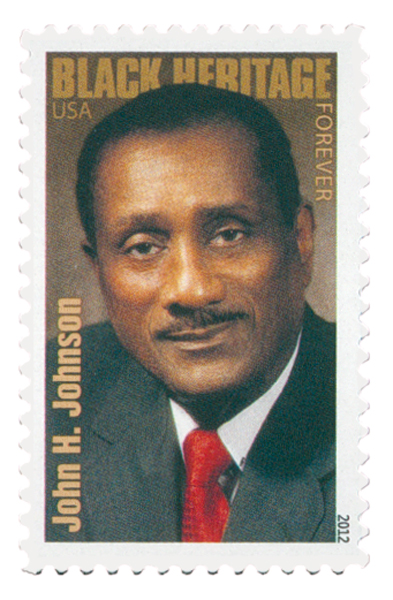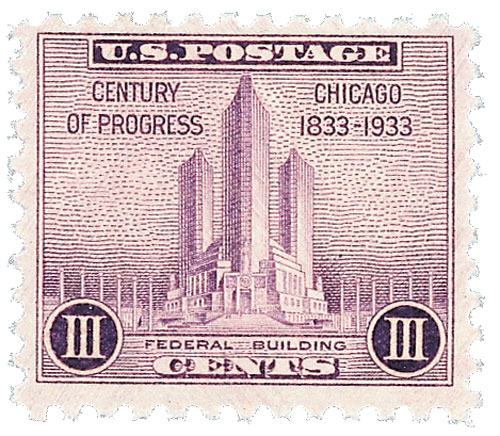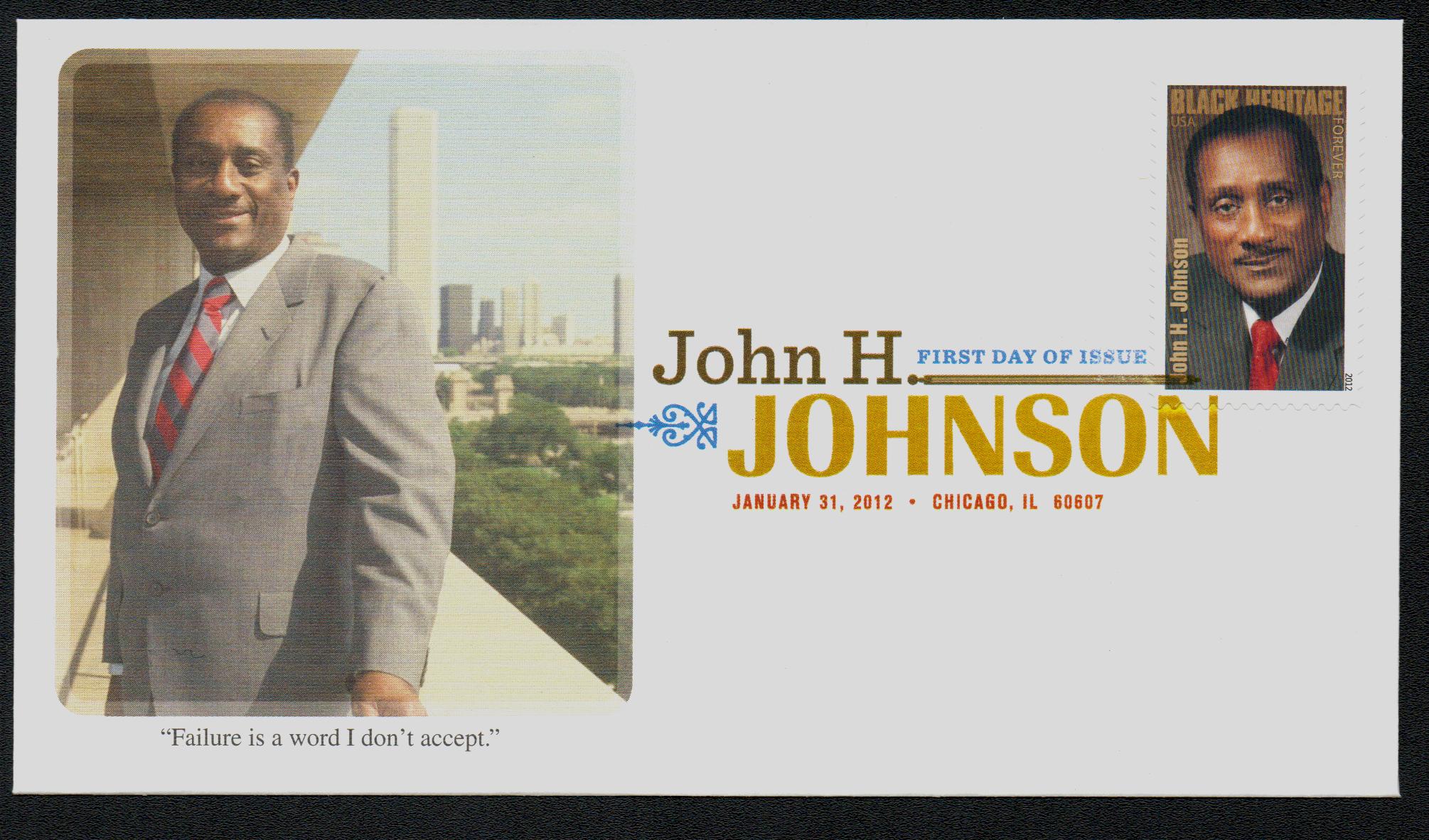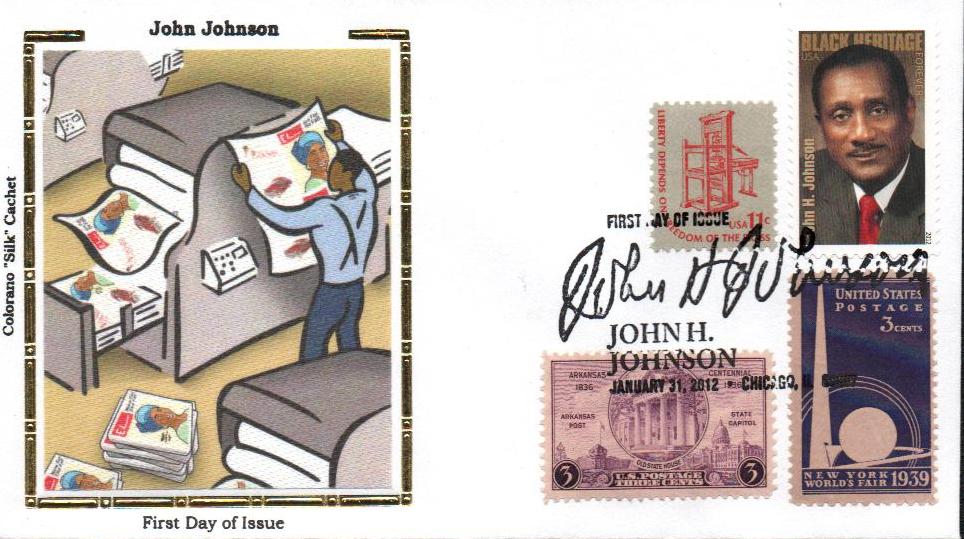
U.S. #4624
2012 45¢ John H. Johnson
Black Heritage
Issue Date: January 31, 2012
City: Chicago, IL
Quantity: 80,000,000
Printed By: Ashton Potter
Printing Method: Offset
Color: Multicolored
Birth Of John H. Johnson

Businessman and publisher John Harold Johnson was born on January 19, 1918 in Arkansas City, Arkansas.
As a child, Johnson attended a segregated and overcrowded elementary school. There was no high school for African Americans, but he enjoyed school so much, he repeated the eighth grade rather than end his education.

Johnson attended the 1933 Chicago World’s Fair with his mother. Together they decided that they might have more opportunities in the North, so they moved to Chicago. Johnson enrolled in the all-African American Wendell Phillips High School and eventually found work with the National Youth Administration. He later transferred to DuSable High School where his classmates included Nat King Cole, Redd Foxx, and William Abernathy. There he displayed strong leadership qualities as student council president and editor of the school newspaper.
Johnson graduated from high school with honors and earned a scholarship from the University of Chicago. While in college, he worked as an office boy at Supreme Life Insurance Company. One of his duties there was collecting newspaper articles into a monthly digest. This led him to start considering a publication similar to Reader’s Digest for African Americans.
Johnson was soon committed to producing Negro Digest. Early on, no one aside from his mother believed in the project. But she offered her furniture as collateral to help him get a loan to publish the first edition in 1942. He soon teamed up with magazine distributor Joseph Levy, who helped him get his magazine on newsstands in other urban areas. After six months, the magazine reached a circulation of 50,000.

In 1945, Johnson introduced Ebony, the world’s largest black-owned magazine. The following year, he persuaded white-owned companies to advertise in the magazine using African American models – a first in American advertising history. He followed this success with Jet, African American Stars, and Ebony Jr. By featuring successful businessmen, entertainers, and politicians in his magazines, Johnson challenged popular misconceptions about African Americans. Johnson published articles by historians telling about the contributions of black Americans. By portraying positive images of African-American life, Johnson encouraged pride in the culture.

In August 1955, Emmett Till was brutally killed in Mississippi. His mother insisted on an open casket at the funeral. Johnson’s news magazine, Jet, published a picture of the 14-year-old’s body, putting a face on the reality of racial prejudice. The image was a catalyst for the civil rights movement. Johnson covered freedom rides, marches, and civil rights legislation from the black perspective.
Over the course of his 60-year publishing career, Johnson helped destroy stereotypes, advance the cause of civil rights, and encourage pride among African Americans. In 1996, President Bill Clinton awarded John Johnson the Presidential Medal of Freedom because he gave “African Americans… a new sense of who they were and what they could do.” He was later named the greatest minority entrepreneur in American history. In addition to his magazines, Johnson also owned radio stations, a TV production company, cosmetics companies, and served on the board of directors of the Greyhound Corporation.







